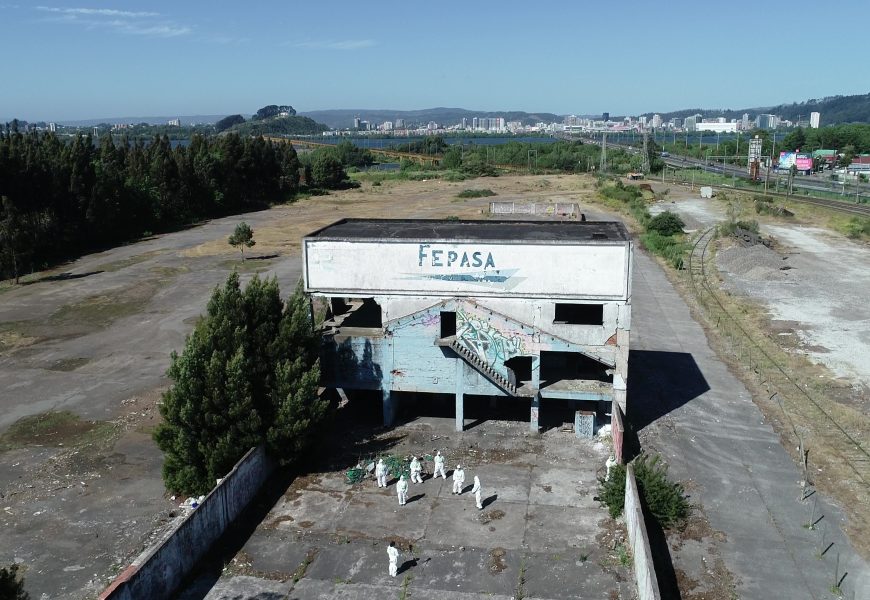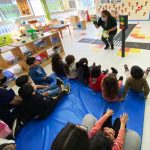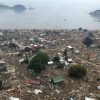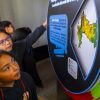How does art coexist in a cutting-edge academic research system? The question has been a constant dilemma of universities that have decided to keep a balance between the area’s production of knowledge and the models hegemonically installed in the academic epistemological apparatus. Here, a proposal from Universidad de Concepción is presented.
By Gonzalo Medina / comuarte@udec.cl / Images: José Miguel Morales y Frank Tinapp
A/r/tography, performance studies, ABR (Arts-based Research), and art therapy studies, among others, are examples of pilot initiatives that have emerged, especially from the Anglo-Saxon world, as methodological research models in the Visual Arts, an area that is under development. These have been described in Spanish by authors including Fernando Hernández, Ricardo Marín, and Diana Taylor.
Innovation in research
Universidad de Concepción is continuously opening up to generate spaces for the discussion, activation, and deployment of “other ways of doing things”. In this vein, the UdeC Vice-Rectory of Research and Development approved as an “initiation” project, in the “science” category, the
research project Visual Arts and interdisciplinary work: production/research focused on the
phenomenon of de-industrialization in Chilean localities, proposed by academic staff from the Department of Visual Arts.
The project is a space for the academic experimentation of emerging practices from these new artistic-visual production/research models, “a matter resolved through an interdisciplinary
research formula that links social science research methods, to analyze case studies with artistic methods and practices”, José Miguel Morales, Project Leader and Head of the UdeC Visual Arts Degree Program, confirmed.
In this way, a research experiences laboratory is created that, systematized in five stages, seeks to both obtain results from case studies and methodological conclusions about the interdisciplinary
research process of these.
De-Industrialization
The project looks to innovate in traditional research, incorporating artistic-visual practices. For this, the team comprising UdeC academic staff, José Miguel Morales, Noelia Carrasco, Mario
Gomes, Natascha de Cortillas, Leslie Fernández, and Javier Ramírez “involves different curricular profiles that foster interdisciplinary work, addressing the de-industrialization from relational art, art and politics, project didactics, and areas such as anthropology, history, philology, patrimony and architecture”, Morales detailed.
Post-industrialization as a phenomenon and concept with different meanings offers multiple dimensions and perspectives for interdisciplinary, and eventually transdisciplinary work. “In this
sense, the choice of “de-industrialization” is not naïve, as it also refers to the production/research of local artists, who have raised the concept, recording it in the area with publications and specialty meetings; acknowledging a particularly relevant object of study in the region, thanks to its industrial history of the 19th and 20th Centuries. The case studies were identified through their high potential to offer production/research models, innovative, respectful, and open to the different types of knowledge on the topic of de-industrialization. Those artists include Carolina Opazo, Juana Guerrero, Nemesio Orellana, Francisco Navarrete, Colectivo Última Esperanza, Gonzalo Castro, and Sady Mora”, comments Morales, who has studied these issues at a local level.
To date, the research has generated two laboratory experiences. The first was in the former FEPASA (Ferrocarril del Pacifíco S.A.) offices, where an artistic action including the use of the so-called “ball game” took place. The goal of the game was to generate a distribution of Chilean zones to identify artists and choose case studies pertinent to the phenomenon of interest for the research. On this occasion, Frank Tinapp and Patricia Henríquez took part. They are both UdeC professors, in Aerospace Engineering and Literature, respectively. In the second event, when it came to entering into dialog and applying research tools to the case studies, collaboration in Media Arts was required from the local collective, Toda la Teoría del Universo (TTU, in Spanish), who set up a virtual reality space where the case studies and research team could enter and apply the research tool.
In this way, a pilot experience was generated for the academic team, and even for the university itself, providing a space to produce/research artistic-visual work and, in this process, academically
produce researchers, from an atypical space.
For more information: http://artesplasticasyvisuales.udec.cl/
Last modified: 29 de agosto de 2025






